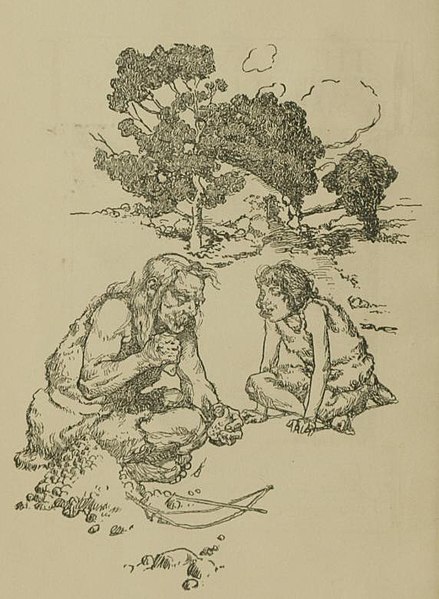The three-age system is the periodization of human prehistory into three time-periods: the Stone Age, the Bronze Age, and the Iron Age, although the concept may also refer to other tripartite divisions of historic time periods. In history, archaeology and physical anthropology, the three-age system is a methodological concept adopted during the 19th century according to which artefacts and events of late prehistory and early history could be broadly ordered into a recognizable chronology. C. J. Thomsen initially developed this categorization in the period 1816 to 1825, as a result of classifying the collection of an archaeological exhibition chronologically – there resulted broad sequences with artefacts made successively of stone, bronze, and iron.
Jōmon pottery, Japanese Stone Age
Trundholm sun chariot, Nordic Bronze Age
Iron Age house keys Cave of Letters, Nahal Hever Canyon, Israel Museum, Jerusalem
Hesiod inspired by the Muse, Gustave Moreau, 1891
Prehistory, also called pre-literary history, is the period of human history between the first known use of stone tools by hominins c. 3.3 million years ago and the beginning of recorded history with the invention of writing systems. The use of symbols, marks, and images appears very early among humans, but the earliest known writing systems appeared c. 5,200 years ago. It took thousands of years for writing systems to be widely adopted, with writing spreading to almost all cultures by the 19th century. The end of prehistory therefore came at different times in different places, and the term is less often used in discussing societies where prehistory ended relatively recently.
Engraved images of animals on antler
Massive stone pillars at Göbekli Tepe, in southeast Turkey, erected for ritual use by early Neolithic people 11,000 years ago
An early sketch imagining an adult and a juvenile from prehistoric times making a stone tool
A nineteenth century concept of early humans in a wilderness








